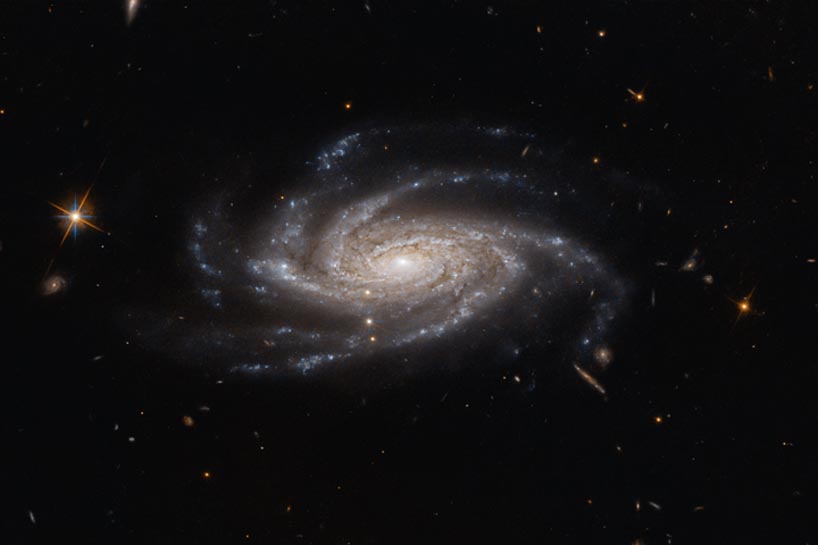
Spiral galaxy
RA 5h 35m 3.91s Dec -50° 57' 58.97"
Pictor
450 million light years
13.8
1.7 by 0.8 arcmin
2.61 x 1.57 arcminutes
North is 177.0° left of vertical
ESA/Hubble & NASA, A. Bellini
February 10, 2020
ABOUT THIS IMAGE:
The spiral galaxy NGC 2008 sits center stage, its ghostly spiral arms spreading out towards us, in this image captured by the NASA/ESA Hubble Space Telescope.
This galaxy is located about 425 million light-years from Earth in the Southern constellation of Pictor (The Painter's Easel). Discovered on December 27, 1834 by astronomer John Herschel, NGC 2008 is categorized as a type Sc galaxy in the Hubble sequence, a system used to describe and classify the various morphologies of galaxies. The "S" indicates that NGC 2008 is a spiral, while the "c" means it has a relatively small central bulge and more open spiral arms. Spiral galaxies with larger central bulges tend to have more tightly wrapped arms, and are classified as Sa galaxies, while those in between are classified as type Sb.
Spiral
galaxies are ubiquitous across the cosmos, comprising over 70% of all
observed galaxies - including our own, the Milky Way. However, their ubiquity
does not detract from their beauty. These grand, spiraling collections
of billions of stars are among the most wondrous sights that have been
captured by telescopes such as Hubble, and are firmly embedded in astronomical
iconography.